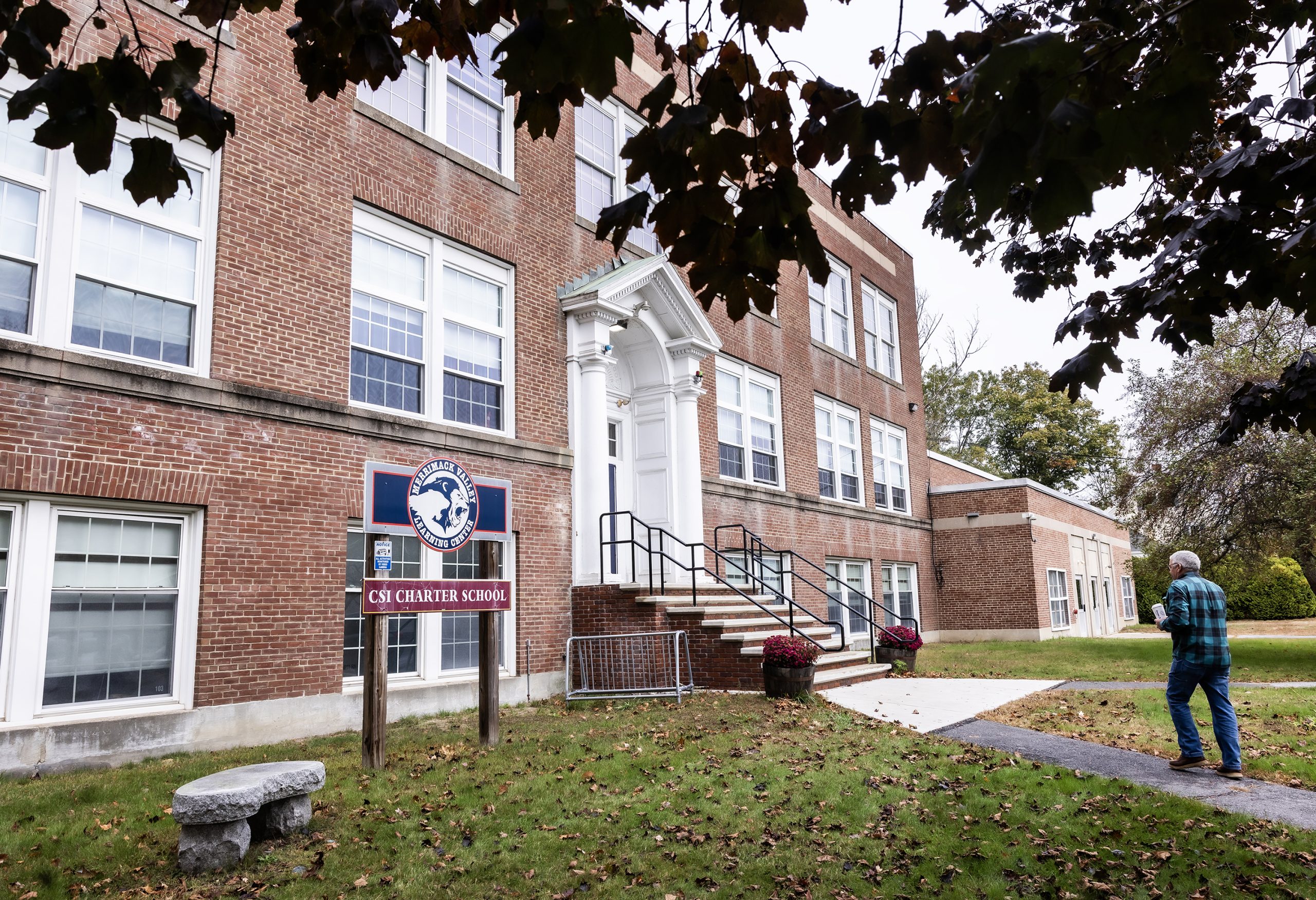After decades of wrangling over the future of the former Washington Street School, Merrimack Valley’s school board approved a major renovation of the Penacook building on Monday.
The project is expected to take seven to ten years and cost at least $5 million. It will involve installing an elevator and new boiler and upgrading the heating and electrical systems, as well as a number of smaller repairs.
The decision to renovate rather than sell the 1930s-era building centered on the future of the Merrimack Valley Learning Center, a program for students with special education and other needs that is housed at the school.
An uncommon program in New Hampshire, the Learning Center allows certain students to receive their education in a separate environment within the district rather than attend a more costly special education private school, administrators and parents have said. The program is also increasingly generating revenue for Merrimack Valley by educating students from other districts, which must pay an annual tuition of about $70,000 per pupil.
“Please don’t sell the Washington Street School,” former school board member and Salisbury resident Seelye Longnecker urged before the vote. “Selling that building would be pennywise and pound-foolish.”
A hallway of the Washington Street School in Penacook. Credit: GEOFF FORESTER/For the Monitor
The renovation will proceed as funding becomes available. The district does not plan to raise money specifically for the project and instead will rely on a mix of out-of-district tuition revenue, grants and leftover funds in the building and site improvement lines of its operating budget.
In addition to the Learning Center, the building houses a food pantry and the CSI Charter School, which pays about $30,000 per year in rent, according to Facilities Director Fred Reagan.
The board approved proceeding with the repairs by a vote of 9-1, with one abstention.
Amanda York of Loudon, the lone member to vote against the renovations, said the decision was too consequential for the 11-member board to decide on its own and instead should have been included as a warrant article at the annual district meeting in March.
“It’s up to the taxpayers,” she said. “It’s a significant amount of money.”
York stressed that she supported the Learning Center programming itself.
The board is not required to get voter approval unless it is issuing a bond for a project, which it does not plan to do for this renovation. Superintendent Randy Wormald, who did not weigh in on the vote itself, said that putting renovations to a district-wide vote could set a complicated precedent.
“We do renovations around here all the time,” he said. “Does that mean every time we’re going to do a roof, we’re going to do a separate warrant to get approval?”
The electrical and water pump room at the Washington Street School of the Merrimack Valley School District. Credit: GEOFF FORESTER/For the Monitor
Much of the debate about the project on Monday centered around whether the Learning Center could be relocated to the high school and middle school buildings. The program currently has 36 students enrolled, 10 of whom are middle schoolers and 26 of whom are in high school, according to Gayle Sweeney, the program’s administrative assistant.
The program started in the high school building before eventually relocating to the Washington Street School, a mile away.
“I was here when the program was housed here in the building, and it was not successful,” school board chair and former teacher Tracy Bricchi said. “It didn’t work for the students in the program; it didn’t work for the students in the rest of the school. It was disruptive to all the students in the school.”
One of the features that makes the Learning Center successful for certain students, according to district administrators, is its separation from the main schools. Some of the Learning Center students struggle with anxiety and school avoidance, according to Director of Student Services Julie Gaudette. The smaller, removed environment has increased school attendance for many students and eventually led some of them to return to the main schools.
Gaudette predicted “a huge increase” in mental health crises and out-of-district placements if the Learning Center were returned to the high school and middle school.
Board member Tom Laliberte, who abstained from the vote because he did not feel he had enough information to make an informed decision, suggested studying the relocation of the Learning Center, but his proposal was shot down by the majority of the board.
“Study after study after examination between different boards over the course of the years has gotten us to this point now,” facilities committee chair Jessica Wheeler Russell said. “I’m hesitant to say, ‘Yes, let’s do another study’, costing us tens of thousands of dollars, discussing it over the course of the next year or two, and have it lost.”
Facilities director Fred Reagan looks over the steam-generated heating system in the basement of the Washington Street School building in the Merrimack Valley School District on Tuesday, October 14, 2025.
Now that the project has been approved, significant unanswered questions remain about how it will proceed.
In the best-case scenario, Reagan said that work on the elevator could begin next July, but that timeline will depend on funding. No detailed plan of exactly how the project will be funded has been released. The district has also yet to fully absorb a major deficit that emerged last school year.
Laliberte said he declined to vote for the project due to what he perceived as insufficient planning.
“I didn’t feel there was a plan over seven to ten years on how that would go or what order construction would occur,” he said. “And I didn’t feel we knew how we were going to fund the $5 million-plus project.”
The decision to proceed with the renovation comes as Reagan is set to retire at the end of the school year. The next facilities director, who has yet to be hired, will inherit the project when they start.





